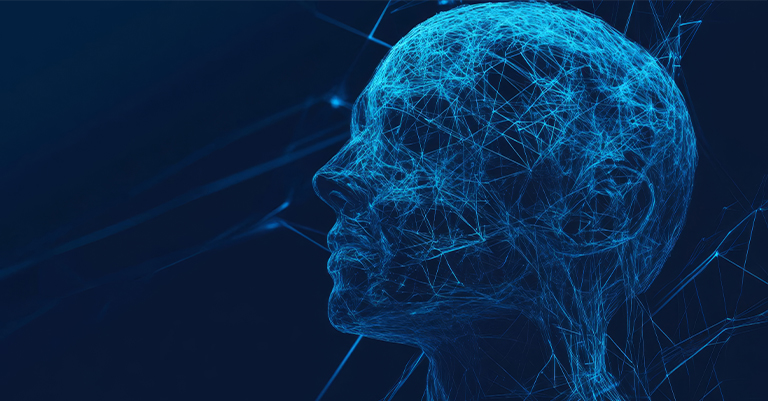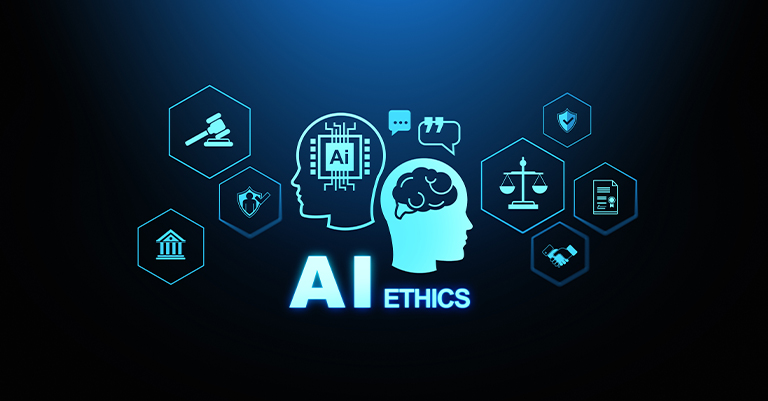How AI Facial Recognition Will Shape Our Daily Lives
Artificial intelligence (AI) is changing how we use technology. AI facial recognition is one example. This tool helps recognize people by their faces. It appears in security systems, smartphones, stores, and hospitals. Facial recognition can make life easier, but it also raises privacy concerns. In this blog, we will explore how facial recognition helps us and the challenges it creates.
Understanding AI Facial Recognition Technology
Facial recognition technology helps computers find faces in pictures or videos. It notices details like the distance between eyes and the shape of the nose. The computer creates a unique “faceprint” for each person. It then compares this faceprint to other images to identify someone. New technology makes facial recognition faster and more accurate. But it also raises concerns about privacy and how we use our data.
Facial Recognition for Enhanced Security

One big reason to use facial recognition is for security. This technology helps keep people safe in many places, like homes and public areas. Here are some ways it improves security:
Smartphone Authentication
Many smartphones use facial recognition to unlock devices. For example, Apple’s Face ID creates a 3D map of your face. This map makes it hard to fool the system with pictures or masks. It provides more security than regular passwords. Users can unlock their phones quickly with just a glance. This combination of convenience and safety has made facial recognition popular among smartphone users, boosting personal security.
Surveillance and Law Enforcement
Police use facial recognition to help prevent crime. They connect this technology to security cameras in busy places. If a known criminal enters a store, the system can quickly alert security staff. This helps keep people safe, but it also raises privacy concerns. Many people worry that constant surveillance could invade their personal space and misuse their information. It’s important to balance keeping everyone safe while respecting people’s privacy.
Access Control in Buildings
Facial recognition is increasingly used to control access to secure buildings. Airports, government offices, and research labs rely on this technology to ensure only approved people can enter. For example, at airport security checkpoints, facial recognition systems can quickly confirm a passenger’s identity. This technology makes the entry process safer and faster. By allowing only verified people into important areas, organizations can protect valuable items and private information from potential threats.
Privacy Concerns
Even though facial recognition has benefits, it brings up privacy concerns. Some people worry about being watched constantly. They fear that others could track their faces without permission. Others are concerned about how accurate these systems are. Studies show they can make mistakes, especially with different races and ages.
To protect everyone, we need rules that balance security and privacy. Companies and governments should create clear guidelines about how they use facial recognition.
Revolutionizing Retail and Customer Experience
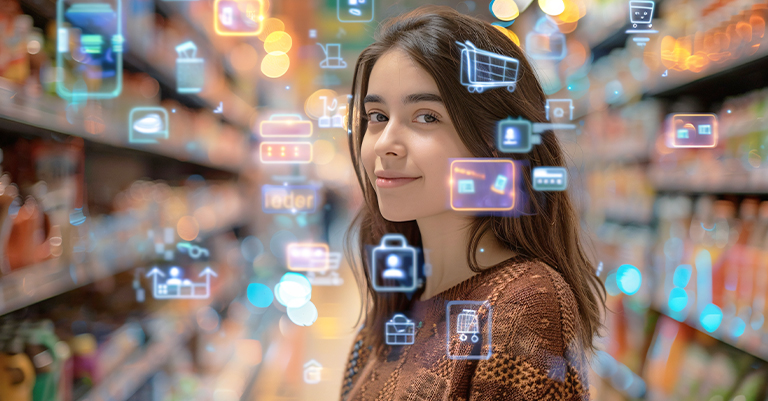
Facial recognition is also changing shopping. Here are some ways it improves stores:
Personalized Customer Service
Facial recognition helps stores recognize returning customers and offer special service based on their past purchases. When a familiar customer enters a store, the system identifies them and checks their purchase history. Then, staff can suggest items they might like or offer special discounts. This personal touch makes shopping more enjoyable and makes customers feel appreciated. By using this technology, stores can build stronger relationships with shoppers, leading to more loyalty and repeat visits.
Seamless Payments and Checkout
Some stores let customers pay by smiling at a camera, making shopping faster and easier. In certain places, customers can complete their purchases in seconds without using cash or cards. This new payment method removes the need for physical transactions, helping shoppers move quickly through checkout lines. By simplifying payments, retailers can improve customer satisfaction and make their operations smoother. As this technology spreads, we might see a future where face scanning becomes the standard way to pay.
Enhanced Security for Stores
Facial recognition helps stores prevent theft by recognizing known shoplifters when they enter. Stores can keep a list of offenders, allowing security staff to act quickly if they spot someone suspicious. This smart approach saves money and makes the store safer for customers and employees. By reducing theft, stores create a better shopping experience for honest customers, who will feel more secure. This technology helps deter potential thieves and protects the store’s property.
AI Facial Recognition in Retail Recap
Facial recognition technology is changing retail in many ways. It helps stores offer personalized customer service by recognizing returning customers and suggesting items based on their previous purchases, building loyalty. Some stores even let customers pay by smiling at a camera, making checkout faster and eliminating the need for cash or cards. Additionally, facial recognition improves security by identifying known shoplifters, allowing security staff to respond quickly. Overall, these advancements create stronger customer relationships and make shopping more convenient.
Applications in Healthcare
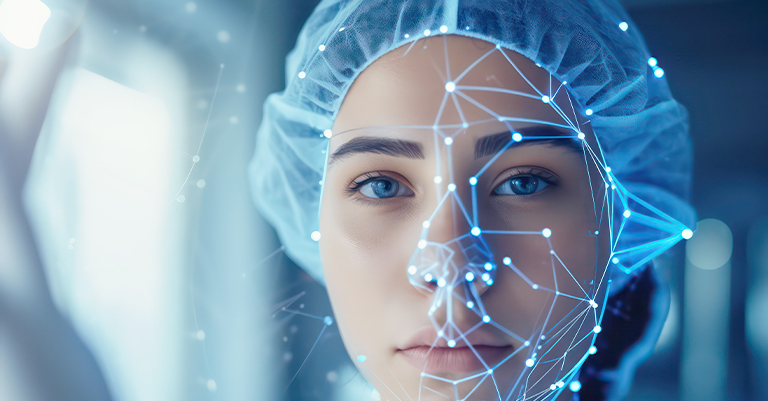
AI facial recognition is making a big difference in healthcare by improving patient care and making things run smoother. This technology offers new ways to make healthcare services more efficient and helpful. Here are some ways facial recognition is changing healthcare:
Patient Identification
Hospitals can quickly recognize patients during check-in using facial recognition. This is especially helpful in emergencies, where every second counts. By analyzing a patient’s facial features, the system matches them with their medical records, helping to prevent mistakes. This quick identification benefits both patients and healthcare workers. The technology speeds up the check-in process, ensuring patients receive the care they need without delays, which improves satisfaction in healthcare settings.
Remote Monitoring and Diagnostics
Facial recognition technology can monitor patients from a distance by analyzing their facial expressions. Special programs can detect signs of pain or discomfort, which is especially helpful for patients who can’t communicate well. For example, doctors can observe patients with chronic health issues and respond quickly if serious problems arise. This ability to spot changes in expressions allows for fast assistance, potentially saving lives. Monitoring patients’ health with facial recognition helps improve their care and overall well-being.
Mental Health Assessment
Facial recognition technology can monitor patients from far away by analyzing their facial expressions. Smart programs can detect signs of pain or discomfort, which is especially helpful for people who can’t communicate easily. For example, doctors can keep an eye on patients with long-term health issues and respond quickly if serious problems arise. This ability to notice changes in faces allows for fast help, which can save lives. Tracking patients’ health using facial recognition helps improve their care and overall well-being.
Improved Data Security

Facial recognition technology helps keep data safe in healthcare settings. Hospitals and clinics use this technology to ensure that only authorized medical staff can access private patient records. This system prevents unauthorized access and data leaks. For example, staff can log into secure systems using their facial recognition profiles, making it harder for unauthorized people to view private information. This is crucial for protecting patient privacy and complying with rules like the Health Insurance Portability and Accountability Act (HIPAA). Strong data security builds trust between healthcare workers and patients, emphasizing the importance of protecting private information.
Enhancing Workflow Efficiency
Using facial recognition in healthcare can make processes run much smoother. By automating patient check-in and identification, hospitals can reduce wait times and help staff work more efficiently. This allows healthcare workers to spend less time on paperwork and more time caring for patients. For example, when patients arrive, facial recognition quickly gathers their information and shares it with doctors immediately. This faster process improves the patient experience and uses resources more effectively in healthcare facilities. Overall, facial recognition helps create a more efficient and responsive healthcare environment.
Ethical Considerations and Patient Consent
While facial recognition in healthcare offers many benefits, it’s crucial to focus on patient consent and data privacy. Patients should understand how their facial data will be used and protected. Clear communication about facial recognition technology helps build trust between healthcare providers and patients. Healthcare facilities should follow strict privacy guidelines and comply with data protection laws. Discussing how their information is managed makes patients feel safer and encourages them to accept this technology. By addressing these concerns, healthcare providers can ensure patients feel comfortable and protected while enjoying the benefits of new solutions.
AI Facial Recognition in Healthcare Recap
AI facial recognition is transforming healthcare by improving patient identification, remote monitoring, mental health assessments, and data security. As this technology advances, it can greatly enhance the quality of care and streamline operations. However, it’s crucial to consider ethical concerns. Prioritizing patient consent and maintaining clear communication helps healthcare providers use facial recognition responsibly. This approach can lead to better patient outcomes and a more efficient healthcare system. By focusing on these aspects, healthcare facilities can benefit from facial recognition while ensuring that patient rights and privacy are protected.
Transforming Travel and Transportation
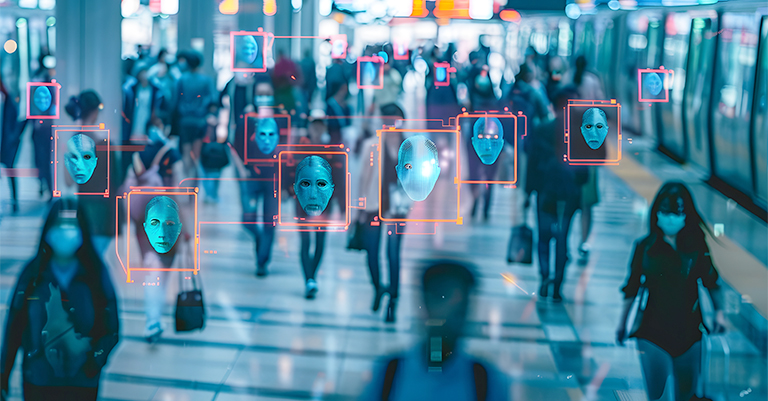
Facial recognition technology is changing the travel and transportation industry by making it more convenient, faster, and safer. This new technology has many uses that improve the travel experience. Here’s how facial recognition is making a difference in this area:
Streamlined Airport Check-In
Many airports around the world use facial recognition systems to make check-in easier for passengers. Travelers can pass through security and board their flights without showing physical boarding passes or IDs. Instead, facial scans at kiosks or security gates confirm their identities. The system matches a passenger’s face to a list of approved travelers. If it finds a match, the passenger can move quickly, speeding up boarding and reducing the risk of identity fraud. Overall, facial recognition helps airports operate more efficiently, increasing traveler satisfaction and building loyalty to airlines.
Public Transport Security
Facial recognition is crucial for making public transportation systems, like subways and buses, safer. Authorities can install facial recognition cameras in key areas to identify people on watchlists immediately. This is especially useful in crowded places, where spotting potential threats can be challenging.
For example, if a known criminal or suspected terrorist tries to board a bus or subway, the system can quickly alert security staff. This helps law enforcement respond quickly to prevent danger and keep passengers safe. Also, knowing they are being monitored can discourage criminal activity, making public transport safer for everyone and improving overall city safety.
Seamless Border Control
Facial recognition is transforming border control in countries like the United States, the United Kingdom, and Australia. These systems automatically verify travelers’ identities at border checkpoints. Passengers simply walk up to a kiosk, where their faces are scanned and matched with their travel documents.
This automation speeds up the entry and exit process, reducing wait times at border control. Instead of waiting in long lines and speaking with border agents, travelers can quickly confirm their identities and continue their journeys. Overall, this change makes international travel easier and less stressful, creating smoother customs and immigration experiences as more countries adopt this technology.
Car Unlocking and Anti-Theft
In the car industry, manufacturers are increasingly using facial recognition technology for keyless entry systems. With this feature, drivers can unlock their car doors and start the engine simply by scanning their face. This personalization allows the car to recognize its owner and automatically adjust settings like seat position and climate control.
Besides being convenient, facial recognition also helps prevent theft. Only the registered driver can unlock the car, greatly reducing the risk of theft. Since it’s nearly impossible to duplicate a person’s facial features, criminals would find it difficult to bypass this system. This combination of convenience and security makes facial recognition a popular choice for modern cars.
Addressing Privacy Concerns
While improvements in facial recognition technology offer many benefits, they also raise concerns about surveillance and privacy. Using this technology widely in travel and transportation can mean constant monitoring, leading to questions about how data is collected, stored, and used.
Travel authorities and transportation providers need to set clear rules for handling biometric data. Open communication with the public about how their data is used and the protections in place is essential. Strong data security practices are necessary to protect sensitive information from theft.
By focusing on ethics and respecting people’s privacy rights, providers can build public trust in facial recognition technology while maximizing its benefits.
Travel and Transportation Recap
Facial recognition technology is transforming travel and transportation by simplifying processes, boosting security, and offering personalized experiences. Its uses include airport check-ins, public transport security, and border control, greatly impacting the industry. However, it’s important to balance these advancements with privacy and ethical data management. By creating transparent policies and strong security measures, the travel and transportation sectors can responsibly use facial recognition technology. This approach creates a safer and more efficient travel experience for everyone involved.
Addressing Privacy and Ethical Concerns
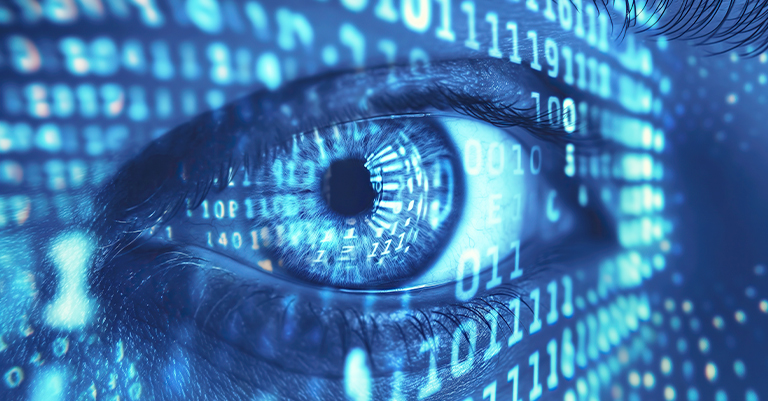
The widespread use of AI facial recognition raises significant privacy and ethical concerns. As this technology becomes more integrated into daily life, it is crucial to address these issues responsibly to ensure public trust and protect individual rights. Here are some of the main concerns associated with facial recognition:
Data Privacy
Using facial recognition technology requires collecting and storing sensitive biometric data, like facial images and personal information. This data is highly sensitive, and mishandling it can cause serious privacy violations. Without proper safeguards, individuals face risks like identity theft and unauthorized access to their information.
To reduce these risks, companies must use strong encryption to secure biometric data, making it inaccessible to unauthorized users. Additionally, following privacy regulations, such as the General Data Protection Regulation (GDPR) in the European Union, is crucial. The GDPR requires explicit consent before collecting data and ensures transparency, helping organizations build trust and reassure users about their data safety.
Bias and Accuracy
Another major concern is the bias and accuracy of facial recognition systems. Studies show that these systems can display biases related to race, gender, and age. For example, some algorithms have higher error rates when identifying individuals with darker skin tones, leading to misidentifications and false positives. This raises ethical questions about fairness in using facial recognition technology.
To promote fairness and accuracy, it’s crucial to develop diverse training datasets that include various races, genders, and ages. Additionally, improving algorithms to reduce biases and conducting continuous testing are essential to ensure the technology is accessible and fair for all users.
Surveillance and Civil Liberties
Facial recognition technology poses significant risks to individual privacy, especially in public surveillance systems. Its ability to identify and track people in real time raises concerns about personal freedom and civil liberties. Constant surveillance can create a chilling effect, making people change their behavior out of fear of being watched.
These concerns have led to calls for stricter regulations and even bans on facial recognition in public spaces. For example, cities like San Francisco have enacted laws that prevent city agencies from using it. Policymakers must develop regulations that balance security needs with protecting individual rights.
Informed Consent
Informed consent is essential for ethical data collection and usage. Users need to clearly understand when and how their biometric data is collected and used. Transparent communication about the purpose of facial recognition technology is key to maintaining trust. Policies should require explicit consent before collecting biometric data, giving individuals the option to opt out if they choose. Transparent practices empower users to make informed decisions about their data and give them a sense of control over their personal information. Organizations that prioritize informed consent respect individual rights and can build stronger relationships with their customers.
Privacy and Ethical Concerns Recap
Addressing the privacy and ethical concerns surrounding AI facial recognition technology is crucial for its responsible use. Key steps include ensuring data privacy through strong encryption, complying with regulations, promoting fairness and accuracy, protecting civil liberties, and prioritizing informed consent. By tackling these challenges, we can leverage the benefits of facial recognition technology while respecting individual rights and building public trust. As the technology advances, ongoing dialogue and collaboration among stakeholders—governments, organizations, and the public—will be essential in shaping a future where facial recognition benefits everyone.
The Future Outlook for AI Facial Recognition
The future of AI facial recognition is promising, with numerous opportunities for innovation and growth across various sectors. As technology evolves, we can expect to see advanced applications integrated into our daily lives, transforming how we interact with the world around us. Here are some key areas where facial recognition is likely to play a pivotal role:
Integration with Augmented Reality (AR)
Integrating facial recognition with augmented reality (AR) technology opens up exciting opportunities for creating interactive and personalized digital experiences. In the fashion and beauty industries, virtual try-on experiences can become more precise, allowing users to see how clothing fits or how makeup looks before buying. This not only improves the shopping experience but also reduces returns, helping customers make better decisions.
Moreover, AR applications in gaming and social media can use facial recognition to create more immersive experiences. For instance, characters could respond to players’ facial expressions, and social media filters could perfectly match users’ features, enabling richer interactions and personalized content.
Smart Cities
Facial recognition technology will play a key role in developing smart cities, where interconnected devices and AI improve urban living. In these cities, facial recognition can enhance many aspects of life, from traffic management to public safety. For example, it can monitor traffic flow and reduce congestion by analyzing patterns of pedestrians and vehicles. Smart traffic lights could adjust in real-time, optimizing traffic movement and reducing delays.
Additionally, facial recognition can greatly enhance public safety. By integrating this technology with city surveillance cameras, law enforcement can quickly identify known criminals or missing persons. This proactive approach improves community safety and allows for faster responses to incidents. Moreover, smart cities can use facial recognition to streamline public transportation services, making it easier to access resources and boosting overall city efficiency.
Evolving Privacy Standards
As awareness of data privacy grows, regulations for facial recognition technology will likely become stricter. People are increasingly concerned about how their biometric data is collected, stored, and used. To address these concerns, governments and organizations must establish strong privacy standards that protect individual rights while still enabling the benefits of facial recognition.
Emerging technologies like differential privacy can help balance data usefulness and privacy by keeping collected data anonymous and preventing individuals from being re-identified. Organizations that focus on transparency and accountability will gain consumer trust, leading to broader acceptance and responsible use of facial recognition technology.
Greater Adoption in Daily Life
Facial recognition technology is expected to become more common in everyday life beyond just security and retail. In education, it can personalize learning experiences by identifying students’ needs, helping educators adjust teaching methods and support. By analyzing engagement levels, teachers can modify lesson plans to better suit students.
In interactive entertainment, facial recognition can elevate gaming by recognizing players’ emotions and adjusting gameplay to match their reactions, creating a unique experience for each person. Additionally, it could transform smart home automation by allowing devices to recognize family members, automatically adjusting settings like lighting, temperature, and entertainment options to match each person’s preferences.
The Future of AI Facial Recognition Recap
The future of AI facial recognition technology holds great potential. Its integration with augmented reality, smart cities, evolving privacy standards, and increased everyday use will shape our world. However, it’s crucial to address the challenges that come with these advancements, especially regarding privacy and ethics. By prioritizing responsible implementation and protecting individual rights, we can harness the benefits of facial recognition technology to enhance our lives while respecting personal freedoms. Balancing innovation with ethical considerations will be essential for maximizing its positive impact on society.
Closing Thoughts on AI Facial Recognition

The future of AI facial recognition is promising, offering major advancements in security, retail, healthcare, and travel. This technology can help law enforcement quickly identify suspects, personalize shopping experiences, and streamline patient identification and travel check-ins.
However, we must prioritize ethical considerations and safeguard individual privacy. The collection of biometric data raises concerns about consent and potential misuse. Individuals should understand how their data is used and the protections in place, emphasizing transparency to build trust.
As we adopt this technology, it’s crucial to set guidelines for responsible use. Policymakers, technologists, and the public must work together to create comprehensive regulations. These should include data protection standards and measures to ensure fairness and accountability.
Addressing biases in facial recognition systems is also critical. Ensuring accuracy across diverse demographic groups will help create a fairer technology that benefits everyone. In conclusion, the next few years will be crucial in shaping the use of AI facial recognition. By focusing on transparency, equity, and privacy, we can ensure this powerful technology enhances our lives while respecting individual rights.




